Space News
Digitaltrends
35

Image Credit: Digitaltrends
See the Blue Ghost spacecraft drilling into the moon’s surface
- The Blue Ghost spacecraft from Firefly Aerospace is currently working on science research on the moon.
- The spacecraft successfully landed 10 days ago and has been deploying payloads and collecting data.
- Blue Ghost is operating the LISTER instrument, a NASA drill system, to measure temperature information from beneath the moon's surface.
- The LISTER instrument is designed to measure heat from the moon's interior and help scientists understand its thermal evolution.
Read Full Article
2 Likes
Brighter Side of News
323

Image Credit: Brighter Side of News
Climate Change Is Making Space More Hazardous for Satellites
- Greenhouse gas emissions are affecting the thermosphere, which extends into low Earth orbit where satellites operate.
- CO2 in the upper atmosphere radiates heat away, causing the thermosphere to cool and contract, impacting satellite operations.
- This long-term shift in the thermosphere due to greenhouse gas emissions affects atmospheric density and space debris.
- Reduced atmospheric drag because of thermosphere contraction increases the risk of collisions and creates more space debris.
- The rapid increase in satellite numbers, particularly with megaconstellations like SpaceX's Starlink, heightens collision risks.
- MIT study suggests that greenhouse gas-induced atmospheric changes could reduce safe satellite operation by 50-66% by 2100.
- Runaway collisions known as the Kessler syndrome could render space unusable if emissions continue to rise unchecked.
- Urgent need for sustainable space operations to prevent a crowded and hazardous space environment in the future.
- International efforts to regulate satellite deployment and limit emissions are crucial to ensure space sustainability.
- Research highlights the interconnectivity between Earth's climate and space sustainability, emphasizing the need to address greenhouse gas emissions.
Read Full Article
19 Likes
Nasa
0
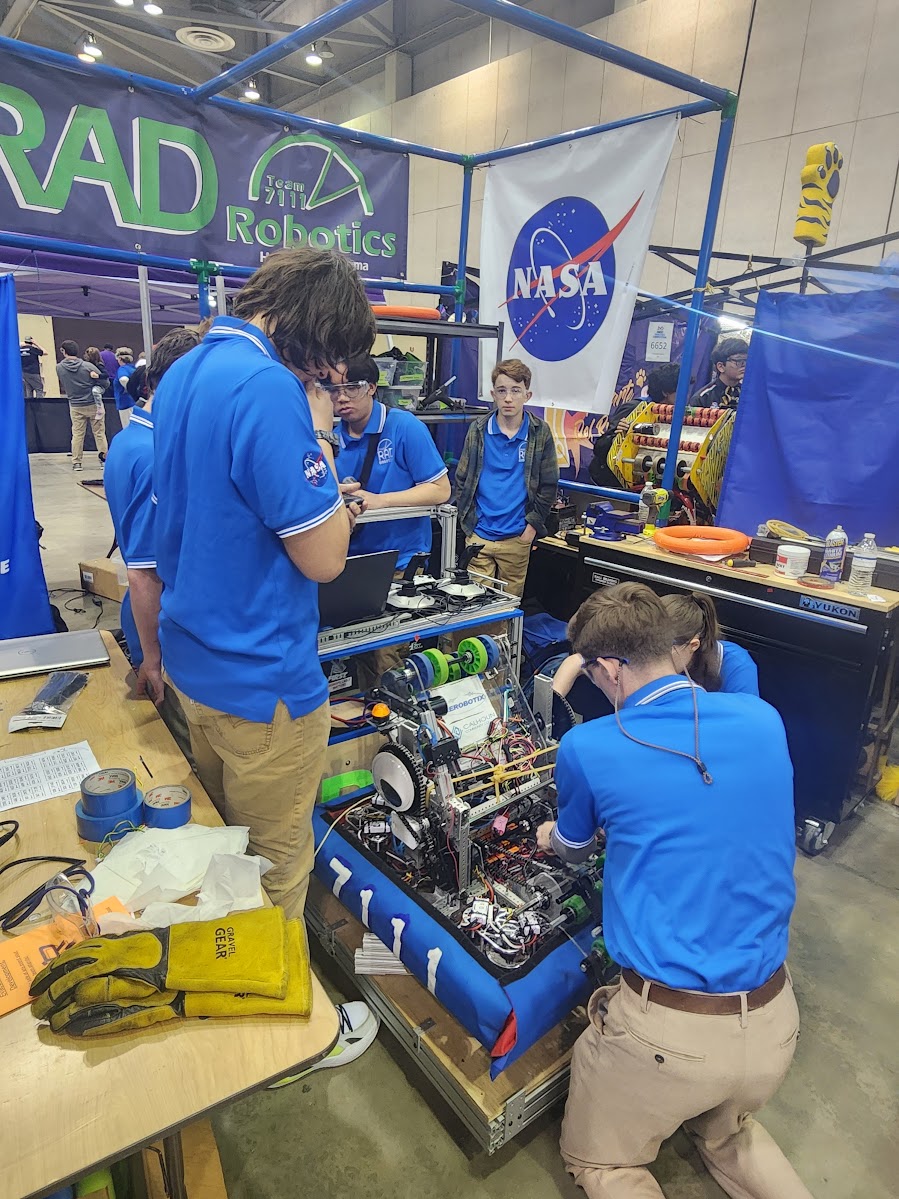
Image Credit: Nasa
NASA Invites Media to Annual FIRST Robotics Rocket City Competition
- The annual FIRST Robotics Rocket City Competition is scheduled for March 14-15 in Huntsville, Alabama.
- Teams of high school students will compete in the robotics game called 'REEFSCAPE'.
- The event is free and open to the public, with opening ceremonies starting at 8:30 a.m. CDT.
- NASA's Marshall Space Flight Center and Office of STEM Engagement support the competition to address the shortage of students pursuing STEM careers.
Read Full Article
Like
Livescience
386
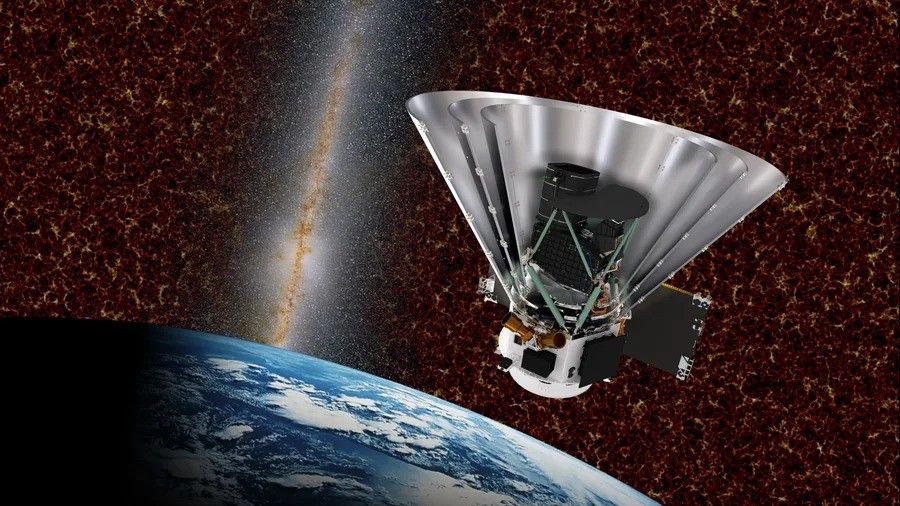
Image Credit: Livescience
Liftoff! NASA launches SPHEREx telescope — an infrared observatory that will help JWST solve the mysteries of the universe
- NASA has launched the SPHEREx telescope, an infrared space telescope that will rival the James Webb Space Telescope (JWST).
- SPHEREx will scan the entire night sky four times, collecting data from more than 450 million galaxies during its two-year operation.
- The telescope will help scientists gain insights into galaxy formation, the origins of water, and the early universe.
- SPHEREx will complement JWST by flagging interesting regions for further study.
Read Full Article
23 Likes
Discover more
Nasa
337
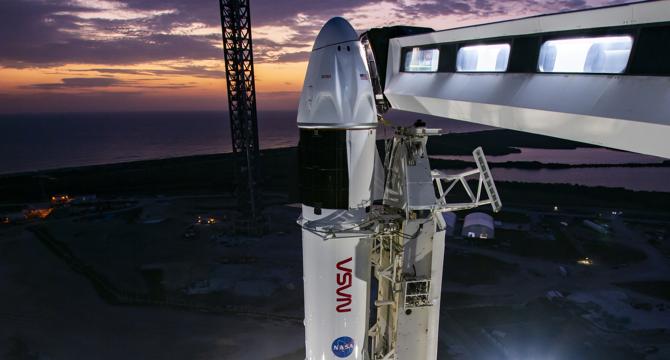
Image Credit: Nasa
Sun Rises on Crew-10 at Launch Pad
- SpaceX Falcon 9 rocket with Dragon spacecraft on top is set to launch Crew-10 from NASA Kennedy Space Center.
- Crew-10 members will conduct scientific research on the International Space Station to benefit humanity on Earth.
- Activities include material flammability tests, engaging with students via ham radio, and testing a backup lunar navigation solution.
- The launch can be watched live on NASA+ with coverage starting at 3:45 p.m. EDT on March 12, 2025.
Read Full Article
20 Likes
Brighter Side of News
292

Image Credit: Brighter Side of News
Strange cosmic phenomenon at center of our galaxy points to new kind of dark matter
- Scientists have been studying dark matter, which makes up about 85% of all matter, for decades due to its gravitational effects.
- A cosmic energy phenomenon in the Milky Way's Central Molecular Zone hints at a new type of dark matter.
- High ionization levels in hydrogen gas at the galactic core challenge current theories on dark matter interactions.
- The study in Physical Review Letters proposes lighter dark matter particles, different from traditional WIMPs, causing ionization.
- New dark matter particles could be below 100 MeV and generate electron-positron pairs leading to ionization in gas clouds.
- The research shifts focus from WIMPs to sub-GeV particles for dark matter investigations.
- Observations at the galactic center suggest a different approach to studying dark matter's influence on cosmic surroundings.
- The proposed low-mass dark matter particles could explain the 511-keV emission line linked to positron annihilation in the Milky Way.
- This study opens up new possibilities for dark matter research and calls for rethinking detection methods.
- By analyzing data from observatories, scientists aim to redefine our understanding of dark matter and its effects on the universe.
Read Full Article
17 Likes
Popsci
94

Image Credit: Popsci
Which planet has the most moons? Saturn dethrones Jupiter.
- Saturn has replaced Jupiter as the planet with the most moons in our solar system, with a total of 274 moons.
- A group of astronomers from Taiwan, Canada, the United States, and France discovered 128 new moons orbiting Saturn using the Canada France Hawaii Telescope.
- The newly discovered Saturnian moons are irregular moons, likely fragments of originally captured moons that broke apart due to collisions.
- The high number and concentration of new moons near the Mundilfari subgroup suggest a recent cosmic collision within the Saturn system.
Read Full Article
5 Likes
Guardian
409
Image Credit: Guardian
Nasa’s new Spherex telescope lifts off to map cosmos in unprecedented detail
- Nasa’s newest space telescope, Spherex, was launched by SpaceX to map the entire sky in unprecedented detail.
- Spherex mission aims to study the formation and evolution of galaxies over billions of years and the rapid expansion of the universe.
- The telescope will also search for water and ingredients of life within the Milky Way galaxy.
- Spherex will observe the collective glow of galaxies to identify the light emitted by the earliest galaxies and the aftermath of the big bang.
Read Full Article
24 Likes
Nasa
413

Image Credit: Nasa
NASA Glenn Accepts Aviation Award for “NEAT” Facility
- NASA's Glenn Research Center has been awarded Aviation Week's prestigious Laureate Award in commercial aviation for the Electric Aircraft Testbed (NEAT) facility.
- NEAT is located at NASA's Glenn Research Center at Neil Armstrong Test Facility in Sandusky, Ohio and allows collaboration and testing of high-powered electric powertrains with the goal of transforming commercial flight to be more sustainable and fuel-efficient.
- NEAT enables ground testing of cutting-edge systems to troubleshoot issues that occur at altitude, improving the design cycle and accelerating the path to flight.
- Notable achievements at NEAT include successful ground tests of a high-power hybrid electric aircraft propulsion system and testing of a high-power megawatt-class electric machine with the aim of achieving reduced fuel use.
Read Full Article
24 Likes
Nasa
364

Image Credit: Nasa
NASA Glenn Experts Join Law College to Talk Human Spaceflight
- NASA Glenn Research Center’s Director Dr. Jimmy Kenyon and Chief Counsel Callista Puchmeyer participated in a symposium on human spaceflight at Cleveland State University College of Law.
- Dr. Kenyon gave a keynote speech discussing NASA Glenn's areas of expertise and the center's role in supporting the agency's missions and programs, as well as the growing commercial partnerships at NASA.
- Callista Puchmeyer, a graduate of CSU's College of Law, joined a panel on Northeast Ohio's aerospace industry and the legal aspects of commercial partnerships.
- The symposium featured experts from academia, law, and science, discussing various topics related to human spaceflight, including the health and training of astronauts and the legal aspects of space stations.
Read Full Article
21 Likes
Nasa
58

Image Credit: Nasa
NASA Releases its Spinoff 2025 Publication
- The latest edition of NASA's Spinoff 2025 publication features more than 40 commercial infusions of NASA technologies, including research originated at NASA's Glenn Research Center.
- Parallel Flight Technologies used NASA-funded hybrid power systems to make drones more capable in disasters, enabling longer-running, remotely piloted aircraft for agricultural and rescue applications.
- EnerVenue brought down the cost of nickel-hydrogen technology and made it affordable, storing renewable energy in power plants, businesses, and homes.
- Spinoff 2025 also showcases 20 technologies available for licensing with the potential for commercialization.
Read Full Article
3 Likes
Livescience
440
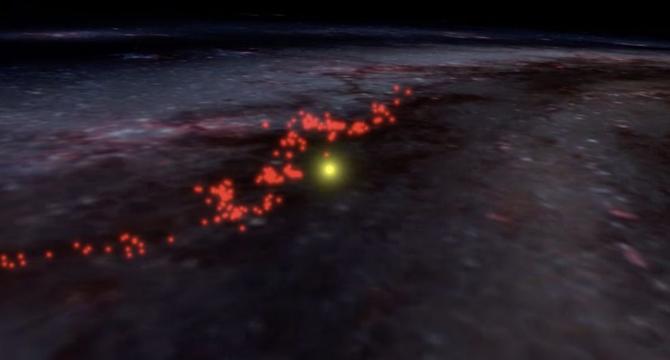
Image Credit: Livescience
A giant extraterrestrial 'wave' hit Earth 14 million years ago — and may have dramatically altered our planet's climate
- A study suggests that around 14 million years ago, our solar system passed through a dense, star-forming region in the direction of the constellation Orion, which may have impacted Earth's climate.
- This region, named the Radcliffe Wave, could have increased the flow of interstellar dust to Earth, coinciding with Earth's transition to a cooler climate and the expansion of the Antarctic Ice Sheet.
- Spotting evidence of this event, such as a spike in the abundance of iron-60, in Earth's geological record could support the hypothesis.
- Research indicates our solar system was closest to the Orion region and dust-heavy star clusters around 14 million years ago.
- Simulations suggest that the dense region may have blocked some of the sun's radiation, contributing to planet-wide cooling during Earth's 'Middle Miocene' transition.
- The study's claim of galactic influences on Earth's climate is intriguing, but further assessments are needed to evaluate its likelihood.
- Although there are challenges in detecting signals from events 14 million years ago, advances in instrumentation and analysis techniques could aid future investigations.
- Astronomers and geologists may focus on potential solar-system-wide evidence, such as deep moon craters, to further explore the effects of extraterrestrial influences.
- Understanding the impact of extraterrestrial events on Earth's climate could shed light on past climatic shifts and help in deciphering the complexities of current climate change processes.
- The study highlights the need for interdisciplinary collaboration across sciences to investigate the possible interaction between cosmic events and Earth's climate history.
Read Full Article
26 Likes
Metro
148
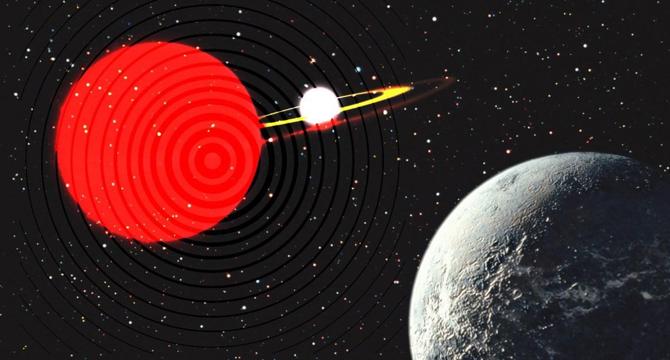
Image Credit: Metro
Mystery radio signals are coming from a part of space never seen by scientists before
- Mysterious radio emissions from a star system found near the Big Dipper have been identified. A red and white dwarf star in tight orbit is colliding, emitting radio signals every two hours.
- Scientists have detected a special type of radio signal from a star-forming galaxy called 'SDSSJ0826+5630', nearly 9 billion light-years away.
- The radio signals detected provide a look-back in time of 8.8 billion years.
- In 2022, unusual radio pulses led to the discovery of a neutron star with characteristics unlike any seen before.
Read Full Article
8 Likes
Earthsky
251

Image Credit: Earthsky
NASA’s Perpetual Ocean 2 video will mesmerize you
- NASA has released a new perpetual ocean video, showcasing ocean currents using surface and deep blue colors.
- The video illustrates the movement of the strongest currents and helps in understanding global heat transportation in the ocean.
- Utilizing NASA's ocean model ECCO, scientists visualize the currents based on data from spacecraft, buoys, and in situ measurements.
- The video highlights western boundary currents, where loops and eddies can trap cold or warm waters and separate from the main flow.
- Specific areas like the Kuroshio Current off Japan and the Agulhas Current near Africa are examined for their unique characteristics.
- The clip also features the Gulf Stream along the east coast of North America with its fast surface speed and distinct warm and cold currents.
- ECCO-2 models aid in enhancing scientists' understanding of ocean currents and their global impact on heat distribution.
- The perpetual ocean video provides a mesmerizing glimpse into the intricate movements of currents and eddies across continents.
- The visualization showcases the dynamics of ocean currents and how they contribute to the Earth's climate system.
- By studying these currents, researchers can gain insights into the complex processes driving oceanic circulation.
Read Full Article
15 Likes
Earthsky
377

Image Credit: Earthsky
Remains of destroyed planet found lurking in Helix nebula
- Astronomers have detected unusual X-ray signals coming from the center of the Helix nebula since 1980, with a new study suggesting they may be from a destroyed planet falling onto the white dwarf star at the nebula's center.
- The Helix nebula is a planetary nebula formed from the outer layers of a star that became a white dwarf, with the X-rays coming from debris of a destroyed planet falling onto the white dwarf.
- Researchers believe the X-ray signals observed in the Helix nebula for over 40 years could be due to remnants of a Jupiter-sized planet that was destroyed by the white dwarf.
- The destroyed planet likely fell into the white dwarf after migrating closer to it, with the debris heating up and emitting X-ray signals, providing a possible explanation for the mysterious X-ray emissions.
- Other similar white dwarfs have also been found to interact with destroyed or disintegrating planets, shedding light on how planets evolve in the vicinity of aging stars like white dwarfs.
- The discovery of the destroyed planet in the Helix nebula sheds new insights into the dynamics of planetary systems around white dwarfs and their survival as stars age.
- Understanding how planets are affected by aging stars like white dwarfs can provide valuable information about the fate of planets, including possible habitability, in such systems.
- The findings from the study published in the Monthly Notices of the Royal Astronomical Society suggest that the destroyed planet's remains continue to orbit the white dwarf, contributing to the X-ray emissions.
- A destroyed planet near a white dwarf in the Helix nebula is a rare discovery, offering unique insights into the interactions between planets and aging stars, providing vital information about planetary survival in such environments.
- The study's findings help astronomers unravel the mysteries of X-ray emissions in the Helix nebula, linking them to the remnants of a destroyed planet, showcasing the complexities of planetary systems in the universe.
Read Full Article
22 Likes
For uninterrupted reading, download the app